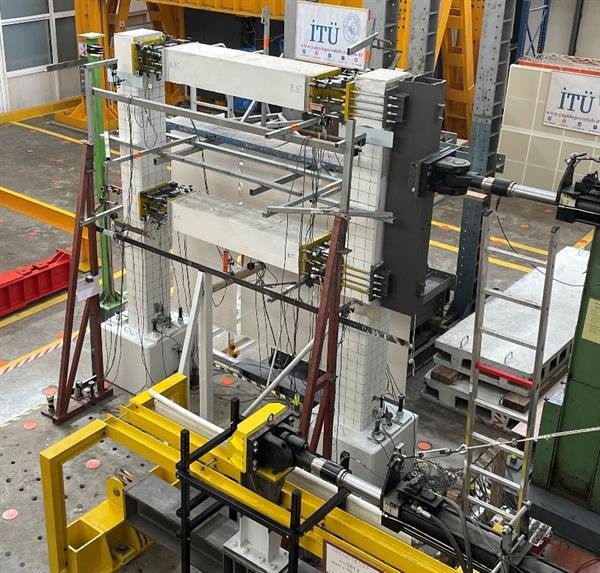by
Muhammed Raşit Çevikalp | Dec 19, 2022
Project Title: Development of Demountable Mechanical Plastic Hinge for Moment Carrying Connection of Precast Reinforced Concrete Beam and Column Elements
Project Type: TÜBİTAK Project
Project Coordinator: Prof. Dr. Ercan Yüksel
Precast reinforced concrete structures are becoming widespread in the world and in our country day by day due to their material and production quality, and fast installation properties.
Within the scope of TÜBİTAK TEYDEP 5190016 project, a simple, quick-to-apply, demountable connection technique has been developed in the Structural and Earthquake Engineering Laboratory. The technique allows that the precast concrete beams to be mechanically connected to the precast concrete columns in frame systems in a way that transfers moments and allows the structural members to be reused.
The special coupler, which is the basic component of the developed connection technique and ensures continuity by mechanically connecting the re-bars of precast reinforced concrete members, has been proven to comply with ISO15835 and AC133 standards.
The seismic behavior of the beam-to-column connections and the frame system in which the developed demountable connection technique was utilized, were determined by the laboratory tests.
The developed technique has been presented to the precast concrete industry as a new and national product option.
